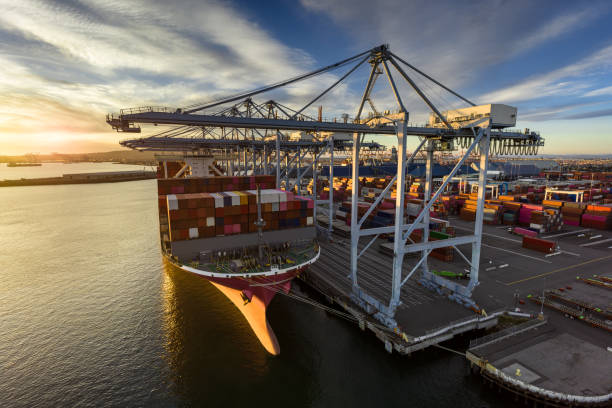In our modern world, energy is the invisible force that keeps everything running — from the lights in our homes to the factories that produce the goods we rely on. While energy generation often gets the spotlight, energy transmission is the critical bridge that delivers this power where it’s needed, when it’s needed. Without efficient and reliable transmission systems, even the most advanced energy sources would be ineffective.
In this blog, we’ll explore the fundamentals of energy transmission, how it works, why it’s so important, and the technologies that are shaping its future.
What is Energy Transmission?
Energy transmission refers to the process of transporting electrical energy from power generation plants to distribution networks, which then deliver electricity to homes, businesses, and industries. This usually occurs over long distances and requires specialized infrastructure to maintain efficiency and minimize energy loss.
There are two main components involved in energy delivery:
- Transmission: High-voltage transportation of electricity over long distances, typically from generation plants to substations.
- Distribution: Low-voltage delivery of electricity from substations to end users.
Transmission acts as the “highway” for electricity, allowing large volumes of energy to be moved efficiently across regions and even between countries.
Why High Voltage?
One of the key principles of energy transmission is using high voltage and low current to reduce energy loss. When electricity flows through conductors (such as copper or aluminum), some energy is lost as heat due to resistance. This loss increases with the square of the current (I²R losses).
By increasing voltage and reducing current, transmission systems can move power more efficiently across vast distances. Transformers are used at both ends of the system — stepping up the voltage for transmission and stepping it down for safe local distribution.
Components of an Energy Transmission System
An energy transmission system is made up of several key components, including:
- Transmission Lines: These carry high-voltage electricity over long distances. They can be overhead (using towers and insulated conductors) or underground (typically more expensive and used in urban areas).
- Substations: Facilities that house transformers, switches, and control equipment to regulate voltage and direct power flow.
- Transformers: Devices that convert electricity from one voltage level to another.
- Circuit Breakers and Switchgear: Equipment that protects the system from faults and allows for safe operation and maintenance.
All these components work together in a synchronized manner to ensure that energy is transmitted safely, efficiently, and reliably.
Challenges in Energy Transmission
Despite the robustness of modern transmission networks, several challenges remain:
1. Energy Loss
While high-voltage systems reduce energy loss, it’s impossible to eliminate it entirely. Even the best systems still lose 6–10% of the energy as heat over long distances.
2. Infrastructure Aging
Many power grids, especially in developed countries, were built decades ago and are now aging. Upgrading and maintaining this infrastructure is both costly and time-consuming.
3. Grid Congestion
As demand for electricity grows and new energy sources come online, some areas experience congestion — where the grid cannot carry additional power efficiently.
4. Integration of Renewables
Renewable energy sources like wind and solar are often located far from population centers. Integrating these into the grid requires advanced planning and often new transmission lines.
5. Environmental and Land Use Concerns
Building new transmission lines, especially overhead lines, can face resistance due to environmental impact and land use issues.
Smart Grids and the Future of Transmission
To overcome these challenges, the industry is turning to smart grid technologies — a digital upgrade to the traditional grid that improves monitoring, control, and efficiency.
Smart grids use sensors, communication networks, and real-time data analytics to manage electricity flow, detect faults instantly, and even self-heal after outages. These systems enable a more flexible and responsive grid, which is essential for integrating renewable energy and managing modern energy demands.
Some exciting advancements in the transmission sector include:
– High-Voltage Direct Current (HVDC)
HVDC is more efficient than traditional AC transmission for long distances, particularly undersea or underground. It also allows power to be transferred between grids with different frequencies.
– Superconductors
Materials that carry electricity without resistance, even over long distances, promise near-zero energy loss. While still expensive and requiring cooling systems, superconductors are a key area of research.
– Energy Storage Integration
Batteries and other storage technologies are being integrated into transmission networks to smooth out supply and demand fluctuations, especially with renewable sources.
– Digital Twin Technology
This involves creating a digital replica of the transmission system that allows operators to simulate scenarios, plan upgrades, and optimize performance with high precision.
The Global Importance of Transmission
Energy transmission plays a vital role in economic growth, social development, and environmental sustainability. A reliable grid ensures uninterrupted power for hospitals, schools, industries, and transportation systems. In rural and developing areas, improved transmission infrastructure can dramatically boost quality of life and economic opportunity.
As we transition to cleaner energy sources, transmission becomes even more important. Wind farms, solar plants, and hydroelectric dams are often located far from urban centers. Efficient transmission is the link that brings renewable energy from remote regions to where it’s needed most.
Conclusion: Powering Progress Through Transmission
Energy transmission may not be as visible as wind turbines or solar panels, but it’s the backbone of our global energy system. Without efficient transmission infrastructure, energy cannot reach consumers — no matter how it is generated.
As our world moves toward more sustainable and decentralized energy models, upgrading and modernizing transmission networks is not just a technical challenge — it’s an essential investment in the future. With the integration of smart grids, HVDC systems, and emerging materials, we are entering a new era of energy transmission — one that is more efficient, reliable, and adaptable than ever before.
Whether it’s keeping cities lit or powering critical infrastructure, energy transmission quietly does the heavy lifting — and it’s evolving rapidly to meet the demands of the modern world.

